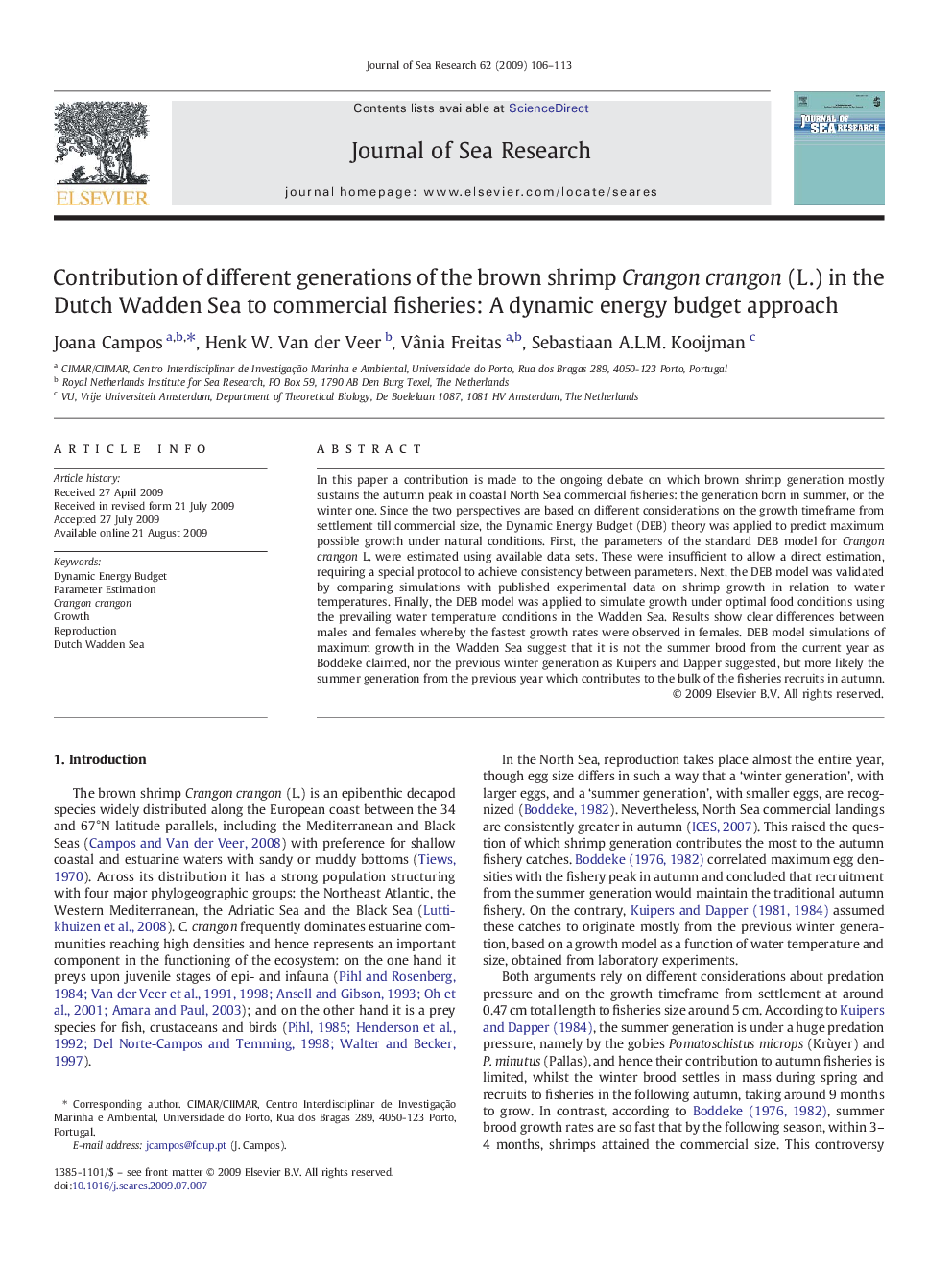| Article ID | Journal | Published Year | Pages | File Type |
|---|---|---|---|---|
| 4550290 | Journal of Sea Research | 2009 | 8 Pages |
In this paper a contribution is made to the ongoing debate on which brown shrimp generation mostly sustains the autumn peak in coastal North Sea commercial fisheries: the generation born in summer, or the winter one. Since the two perspectives are based on different considerations on the growth timeframe from settlement till commercial size, the Dynamic Energy Budget (DEB) theory was applied to predict maximum possible growth under natural conditions. First, the parameters of the standard DEB model for Crangon crangon L. were estimated using available data sets. These were insufficient to allow a direct estimation, requiring a special protocol to achieve consistency between parameters. Next, the DEB model was validated by comparing simulations with published experimental data on shrimp growth in relation to water temperatures. Finally, the DEB model was applied to simulate growth under optimal food conditions using the prevailing water temperature conditions in the Wadden Sea. Results show clear differences between males and females whereby the fastest growth rates were observed in females. DEB model simulations of maximum growth in the Wadden Sea suggest that it is not the summer brood from the current year as Boddeke claimed, nor the previous winter generation as Kuipers and Dapper suggested, but more likely the summer generation from the previous year which contributes to the bulk of the fisheries recruits in autumn.
